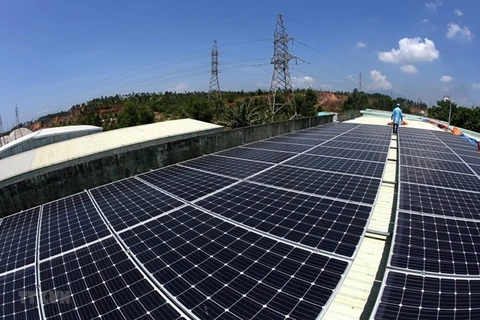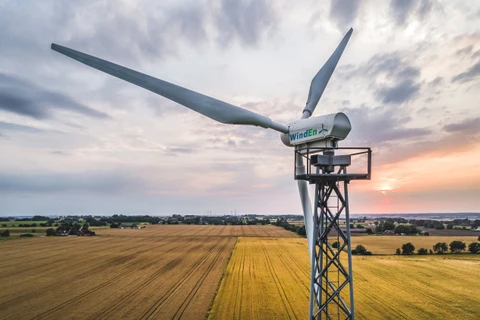Hanoi (VNA) - The Global Wind Energy Council (GWEC) said it has called on the Government of Vietnam to urgently extend the wind energy Feed-in-Tariff (FiT) scheme.
According to the council, Vietnam’s wind industry is already facing a slowing of investment in 2020 because of uncertainty around the investment framework, and further delays to the FiT extension will hinder supply chain development and cost reduction in the emerging wind market, and ultimately undermine Vietnam’s goal of affordable, reliable and clean electricity.
Vietnam is the fastest-growing wind market in the region, with 500 MW of onshore and offshore capacity currently installed and at least 4 GW forecast to be commissioned by 2025.
However, investor interest in wind project development in Vietnam has slowed significantly in 2020, as onshore wind projects typically require 2 years for development but the current FiT only applies to projects completed by November 2021.
Without clarity on the FiT scheme from 2022 onward, investors are facing too much uncertainty to commit to new wind projects, jeopardising the future pipeline and leading to job cuts in the sector.
“Vietnam has been widely recognised for quickly becoming a regional leader of clean energy in South East Asia and attracting investment commitments from a number of worldclass companies in the sector,” says Ben Backwell, GWEC’s CEO. “The government must now avoid slowing down badly needed investment in wind energy by extending the FiT scheme, thereby ensuring that long-term investments can materialise to create tens of thousands of skilled jobs and provide clean, competitive power for Vietnam’s economy.”
In June this year, the Prime Minister approved an additional 7 GW of new wind projects to be added to Vietnam’s master plan for the power sector (PDP 7). However, the reality is that the vast majority of the 7 GW may not materialize, due to lack of certainty on the FiT extension.
“Vietnam is on the cusp of achieving economies of scale and cost reduction in the wind industry, and this momentum must be maintained if it is to avoid a boom-bust cycle of development,” says Mark Hutchinson, Chair of GWEC’s South East Asia Taskforce. “Due to project timescales, a delayed FiT extension risks a “bust” period for the wind sector, wherein very few projects will be connected to the grid from 2022-2023. In the long run, this will jeopardise the cost reduction made possible by consistent, large-scale supply chain development, and ultimately result in less renewable energy at higher prices for Vietnam.”
At least 1.65 GW of wind projects is forecast to be installed before the current FiT expires in November 2021. Wind energy, as a clean, indigenous energy source, plays an important role in bolstering Vietnam’s energy security and meeting its soaring electricity demand.
Moreover, the growing renewables sector could generate billions of dollars in investment capital and hundreds of thousands of jobs in the long term.
The Government of Vietnam is currently considering the FiT extension and the introduction of a new FiT scheme. The situation for the wind sector has now become critical, as the slowdown in investor interest in 2020 has been compounded by disruptions from the COVID-19 pandemic.
To date, Vietnam’s wind market has benefited from increasingly strong flows of foreign and domestic capital. The 4 GW due to be installed by 2025 could generate up to 65,000 jobs and about 4 billion USD in investment.
To realise this potential, the Government of Vietnam must act now to extend the wind energy FiT scheme and avoid a prolonged slowdown of clean energy investment and installation in the years ahead, the council said.
GWEC is a member-based organisation that represents the entire wind sector. The members of GWEC represent over 1,500 companies, organisations and institutions in more than 80 countries, including manufacturers, developers, component suppliers, research institutes, national and regional wind and renewables associations, electricity providers, finance and insurance companies./.
VNA























